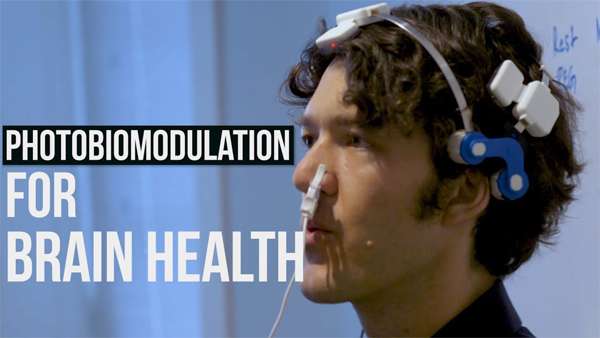All connective tissue exhibits the property of viscoelasticity, which is simply a combination of the behavior of the properties of elasticity and viscosity.73,76 Elasticity refers to a material’s ability to return to its original state following strain or deformation (i.e., change in length or shape) after a removal of the stress or load. This mutable change is termed elastic deformation and is similar to the changes that occur in a rubber band under high rates of strain. The rubber band rapidly conforms to a new length and is able to return to its original resting length when the stress is removed. However, the rubber band breaks if the degree of stress exceeds the strain capabilities (Fig. 3-3). Viscosity refers to a material’s ability to resist a change in form or to dampen shearing forces. Tissues exhibiting viscosity have time-dependent and rate-dependent properties when forces are applied to them.
The rate at which tissues are stretched has a profound effect on the degree or percent of strain. As mentioned, tensile (distractive) or compressive forces will produce deformation on viscoelastic materials, but will allow return to their original state after removal of the force. Given normal conditions, however, viscoelastic materials do not immediately return to their original state. Viscoelastic materials, unlike pure elastic materials, have time-dependent properties. Slower rates of stress produce greater amounts of strain or elongation, whereas faster rates of stretch produce much smaller amounts of elongation.29,35,119 As such, they are sensitive to the applied force duration. Tissues gradually lengthen when they are subjected to constant or repeated stress of long duration.
So a viscoelastic material subjected to either a constant compressive or tensile load will initially respond by rapidly deforming; it continues to deform over a finite length of time even if the load remains constant. This deformation of the tissue will continue until a state of equilibrium is reached when the load is balanced. This is called the creep phenomenon (Fig. 3-4),76 which simply means the gradual increase in tissue length that occurs when maintaining a constant stress (or force). For example, if one uses a constant force against the muscle with slow and passive stretching, the muscle will eventually elongate. However, the tissue does not return to its original length immediately when unloaded because of the collagen’s viscous property.73 Essentially, the longer the duration of the applied force, the greater the deformation or stretching of the tissue.
Another term frequently used is stress-relaxation, or force-relaxation. Unlike creep, this occurs when a viscoelastic material experiences a constant strain (no deformation occurs). In this case, a high initial stress placed upon a tissue decreases over time until equilibrium is reached and the stress equals zero, resulting in relaxation of the tissue. Consequently, no change in length is produced. For example, if a muscle is held at a certain length over time, a reduction in stress would occur, but there would be no change in length (no stretch occurs).
The loading and unloading of tissue is influenced by its viscoelastic properties. This loading and unloading is quantified by measuring the hysteresis area (Fig. 3-5). The loading (solid line) and unloading (dashed line) phases represent a measurement of the stress and strain that is applied to a tissue and then released. The hysteresis area lies between the two lines and represents the amount of energy dissipated in the loading and unloading process.41,73
The ability of tissues to recover after stress is extremely important in relation to flexibility. Woo and colleagues136 have shown that increasing the levels of stress produces an increase in collagen within ligaments and tendons, whereas reducing the levels of stress causes weakening in connective tissues. Recovery is the ability of tissues to return to their previous resting state. However, it does not imply that permanent elongation or microscopic damage has not occurred. Plastic deformation is force dependent under slow rates of stress and is used to describe permanent change in a tissue. For example, when a low degree of stress is applied to a plastic spoon, the spoon slowly deforms to a new shape. The spoon breaks if the stress is applied too fast (Fig. 3-6). Lehman and colleagues74 and Warren and co-workers126 have demonstrated that recovery of the tissue’s resting length had occurred after microscopic failure had begun.
Along with stress and the rate of stress applied to tissues, temperature also affects connective tissue extensibility as well as the rate of creep. High temperatures in the range of 37° C (98.6° F) to 40° C (104° F) affect the viscoelastic properties of connective tissue and increase the rate of creep.29,73 The higher the temperature (approximately 45° C [113° F] is the therapeutic upper limit), the greater the degree of elongation with stress before tissue failure.108 Because connective tissue’s viscoelastic and plastic changes occur at higher temperatures, there is less microscopic damage under stress at these temperatures. Studies by Warren and colleagues127 have demonstrated that a temperature of 45° C is needed to reduce tissue damage during strains of 2.6% or less. So to stretch out a connective tissue structure, one should heat it and use a large load over a long period of time to produce creep.96 Low temperatures decrease the rate of creep.
Muscle or contractile tissue responds to stretch by elastic and plastic deformation properties in ways similar to connective tissue. Obviously the contractile properties of muscle allow for the greatest degree of freedom of movement around a joint. Although connective tissue is considered a passive resistant to joint motion, muscle tissue is considered an active restraint to joint motion by virtue of its elastic and contractile elements. Active exercise (muscular contractions) affects intramuscular temperature. Increases to approximately 39° C are observed in exercised muscle.6 Commonly used passive thermal agents that increase tissue temperature are moist heat and ultrasound. The judicious use of active exercise and passive thermal agents before and during stretching programs enhances the effectiveness of the prescribed program.
Creep and Stress Relaxation
Creep
When subjected to load, all elastomers exhibit an increasing deformation with time, know as creep. This occurs at any stress level and takes place in compression, tension and shear loadings and varies for each type of loading. In service, creep can be minimized by using low working stresses and avoiding high temperatures. No rapid method has been developed for its measurement because there is no know way of accelerating time effects without introducing inaccuracies in predicting rate of creep.
Creep is usually expressed in percent of deformation after the part is loaded rather than the unloaded dimension. Determination of creep takes place after some arbitrary short time interval such as one minute, five minutes or even on day after applying the load. Creep, expressed as a percent, equals total deformation minus initial deformation divided by initial deformation, time 100. In the initial stage, creep occurs at a relatively high rate and then continues at a very slow rate. Failure can occur after an extended period of high stress. Figure 1 illustrates characteristic creep curves. AB in the high stress creep curve indicates the failure phase where actual fracture can occur.

FIG 1
Below the failure zone, when stress is removed, the part will attempt to return to its original dimension; however, it will never fully recover. The unrecoverable portion is called permanent set. Loads which allow intermittent recovery will exhibit less creep than if continuously loaded. However, continuous vibratory loading will increase creep since internal heat is generated.
Strain relaxation is important in applications such as engine mountings since it influences the alignment of various parts of the equipment. Yet, it is difficult to predict these properties for a given application without resorting to simulated service tests because several factors have an important effect on them. Chief among these are amount of strain, operating temperature and changes in these two resulting from vibration.
The relative effects of variables have not yet been correlated so that results of tests under one set of conditions will permit accurate prediction of creep under another set of conditions. It has been established that the higher the initial strain, the higher the creep; also, the higher the temperature, the higher the creep. In general, the degree of creep is dependent on the type of strain. Creep is greater under tension strain then under equal compression strain. Creep is also increased more under dynamic loading then under static loading.
The creep characteristics of two urethane polymers, over a ten-month period, are shown on Figure 2. After approximately 3000 hours (18 weeks) creep reaches a plateau and becomes almost constant. The amount of creep is a function of stress level. This involves a stress of 400 psi. Creep will continue at a very low rate after this point, which is the classic behavior of elastomers.

FIG 2
The actual creep of the 95durometer A compound was 0.033 inches after ten months compared with and initial deflection of 0.200 for sample 0.500 inches thick. After the initial loading, creep is only 6.6%.
The creep rate of rubber materials of all kinds increases at elevated temperatures. Where dimensions are important, operating temperatures must be kept below 150F (66C).
Stress Relaxation
Stress relaxation is the loss in stress when it is held at a constant strain over a period of time. It is usually expressed in terms of percent stress remaining after an arbitrary length of time at a given temperature.
There is no standard method for determining stress relaxation. However, many laboratories have developed relaxation cells. These cells utilize the compression set specimen and the test procedure parallels ASTM D-395 Method B. Stress relaxation for 50A urethane is shown in Figure 3.

FIG 3
When subjected to load, all elastomers exhibit an increasing deformation with time, know as creep. This occurs at any stress level and takes place in compression, tension and shear loadings and varies for each type of loading. In service, creep can be minimized by using low working stresses and avoiding high temperatures. No rapid method has been developed for its measurement because there is no know way of accelerating time effects without introducing inaccuracies in predicting rate of creep.Creep is usually expressed in percent of deformation after the part is loaded rather than the unloaded dimension. Determination of creep takes place after some arbitrary short time interval such as one minute, five minutes or even on day after applying the load. Creep, expressed as a percent, equals total deformation minus initial deformation divided by initial deformation, time 100. In the initial stage, creep occurs at a relatively high rate and then continues at a very slow rate. Failure can occur after an extended period of high stress. Figure 1 illustrates characteristic creep curves. AB in the high stress creep curve indicates the failure phase where actual fracture can occur.Below the failure zone, when stress is removed, the part will attempt to return to its original dimension; however, it will never fully recover. The unrecoverable portion is called permanent set. Loads which allow intermittent recovery will exhibit less creep than if continuously loaded. However, continuous vibratory loading will increase creep since internal heat is generated.Strain relaxation is important in applications such as engine mountings since it influences the alignment of various parts of the equipment. Yet, it is difficult to predict these properties for a given application without resorting to simulated service tests because several factors have an important effect on them. Chief among these are amount of strain, operating temperature and changes in these two resulting from vibration.The relative effects of variables have not yet been correlated so that results of tests under one set of conditions will permit accurate prediction of creep under another set of conditions. It has been established that the higher the initial strain, the higher the creep; also, the higher the temperature, the higher the creep. In general, the degree of creep is dependent on the type of strain. Creep is greater under tension strain then under equal compression strain. Creep is also increased more under dynamic loading then under static loading.The creep characteristics of two urethane polymers, over a ten-month period, are shown on Figure 2. After approximately 3000 hours (18 weeks) creep reaches a plateau and becomes almost constant. The amount of creep is a function of stress level. This involves a stress of 400 psi. Creep will continue at a very low rate after this point, which is the classic behavior of elastomers.The actual creep of the 95durometer A compound was 0.033 inches after ten months compared with and initial deflection of 0.200 for sample 0.500 inches thick. After the initial loading, creep is only 6.6%.The creep rate of rubber materials of all kinds increases at elevated temperatures. Where dimensions are important, operating temperatures must be kept below 150F (66C).Stress relaxation is the loss in stress when it is held at a constant strain over a period of time. It is usually expressed in terms of percent stress remaining after an arbitrary length of time at a given temperature.There is no standard method for determining stress relaxation. However, many laboratories have developed relaxation cells. These cells utilize the compression set specimen and the test procedure parallels ASTM D-395 Method B. Stress relaxation for 50A urethane is shown in Figure 3.



